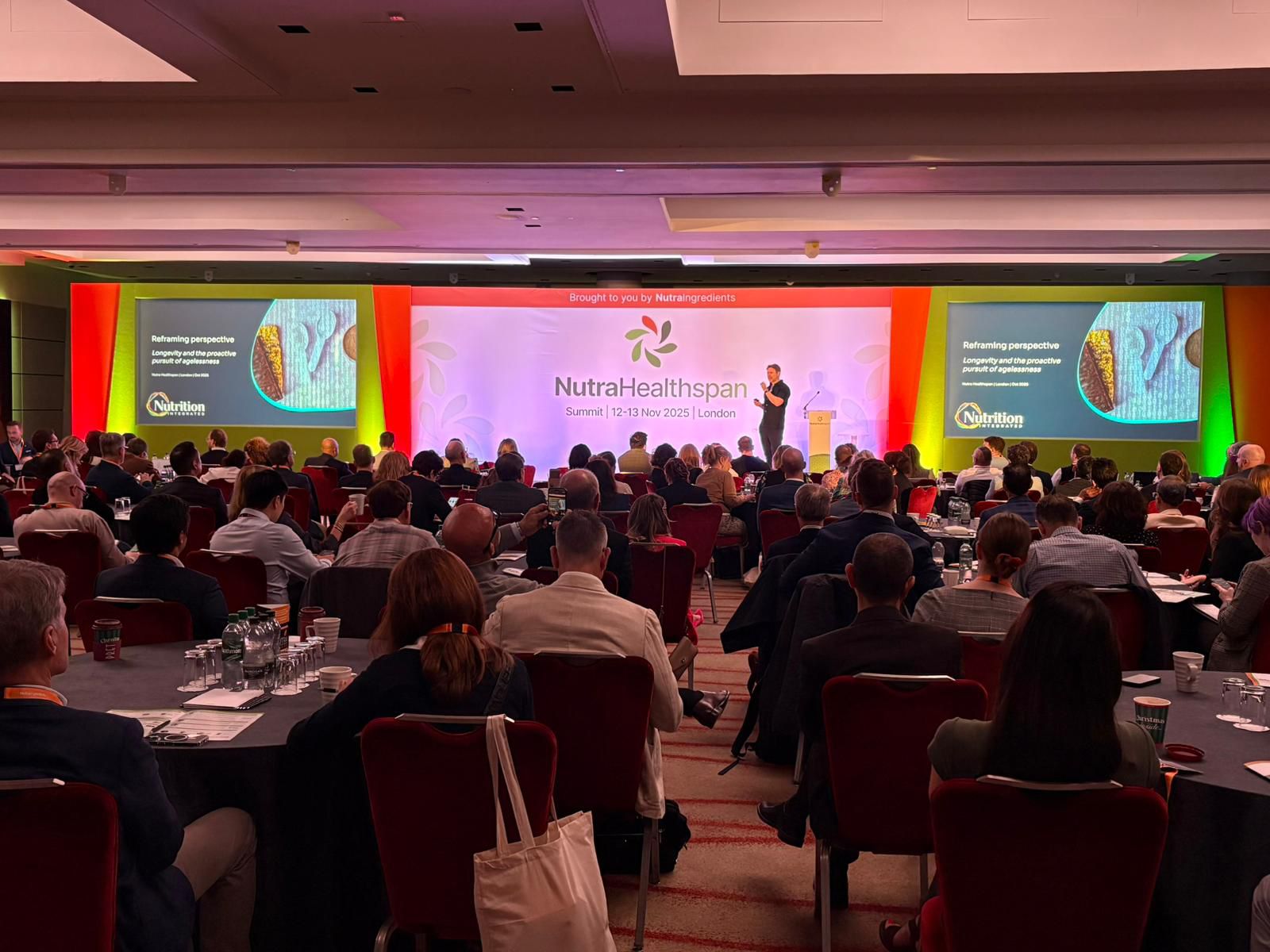If you needed any more proof that longevity is a big deal, this year’s SuppySide West and the inaugural Nutra Healthspan Summit delivered it.
SupplySide, as always, was great. While trends tend to come from the dynamics between brands and consumers, a show like SupplySide is an important pulse-check on what the industry believes people want. Longevity absolutely dominated the show, and the sheer amount of “reimagine / reinvent / redefine” rhetoric was quite incredible. The overarching message was clear: longevity is here to stay.
The Nutra Healthspan Summit, a conference focusing specifically on longevity, took place shortly after. To have the two within a couple of weeks of each other meant we got to see the surface signals as well as the science and thinking behind what’s becoming a serious, sustained movement.
As someone who’s been talking about longevity in one form or another for years, it’s incredibly exciting to see such momentum. It also gave me the chance to step back and consider how we as an industry approach the category. Across everything I saw, I kept coming back to three key points.
1. We need to work on our definitions
We need clearer definitions to avoid ‘longevity’ becoming a vague umbrella term for any product that supports ageing.
Take joint health supplements, for example. If a product helps you age well, then technically it contributes to longevity. But does that mean that every joint-health supplement suddenly becomes a longevity product? I think we’d all agree that the answer is no. Deciding where we draw the line will be important as more products hit the market. Which brings me nicely onto point two.
2. The hallmarks of ageing aren’t consumer ready
Grounding products in the hallmarks of ageing – cellular senescence, mitochondrial dysfunction, genomic instability and so on – is scientifically solid and gives the industry a credible starting point.
But, of course, it isn’t that simple and we have to remember that these are concepts that most consumers don’t understand; you can’t easily jump from “cellular senescence” to “hey consumer on the street, buy this”. While there are some intimations on work being done to make the hallmarks of ageing more consumer friendly, there’s still a long way to go.
Widespread adaptation of longevity as a concept won’t happen without serious consumer education and that requires time, clarity and narrative building. We’re not going to solve ageing in 12 months, this is a decades-long learning curve and we as an industry need to mature alongside it.
3. Not all longevity consumers are the same
As the space becomes more consumer-centric, it’s crucial that we don’t treat everyone interested in longevity as a single audience, because there are clear groups and longevity means wildly different things depending on someone’s mindset, life stage, priorities, disposable income, and even gender.
Alongside biohackers – that is, those people who are looking to ‘live forever’ and are happy to do and spend whatever it takes to achieve their goal – you have the people who want to delay ageing but aren’t necessarily looking to extending life indefinitely, as well as those whose focus isn’t on living longer, but living better. For this final group, the interpretation of ‘better’ and ‘healthspan’ will differ depending on age – and as they age.
If the industry ignores these nuances, it will miss the mark.
Longevity is fundamentally built into human behaviour. While the word may be just beginning to seep into the wider consciousness, it’s a reframing of something we’ve always done and it’s not going anywhere. So buckle up because what we’ve seen from the category so far is only just the beginning.




.jpg)
.jpg)


-min.jpg)




.jpg)
















